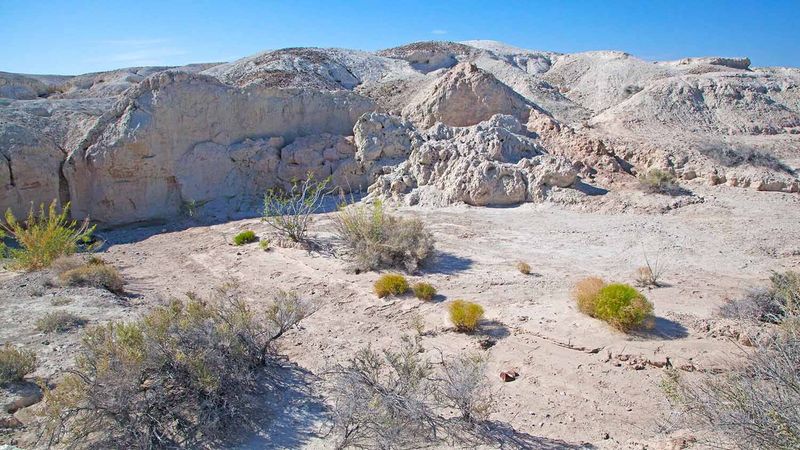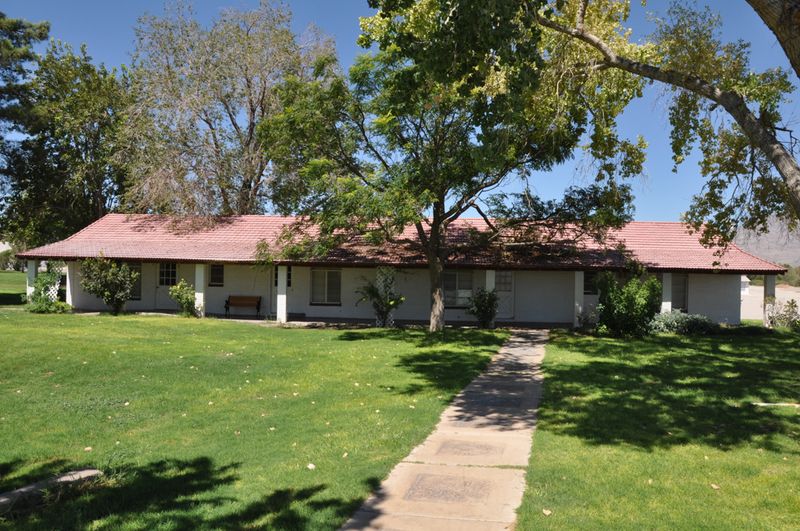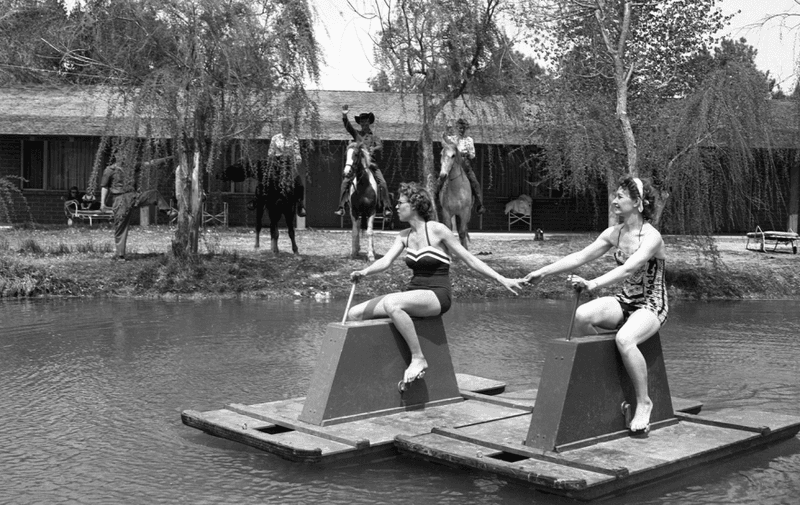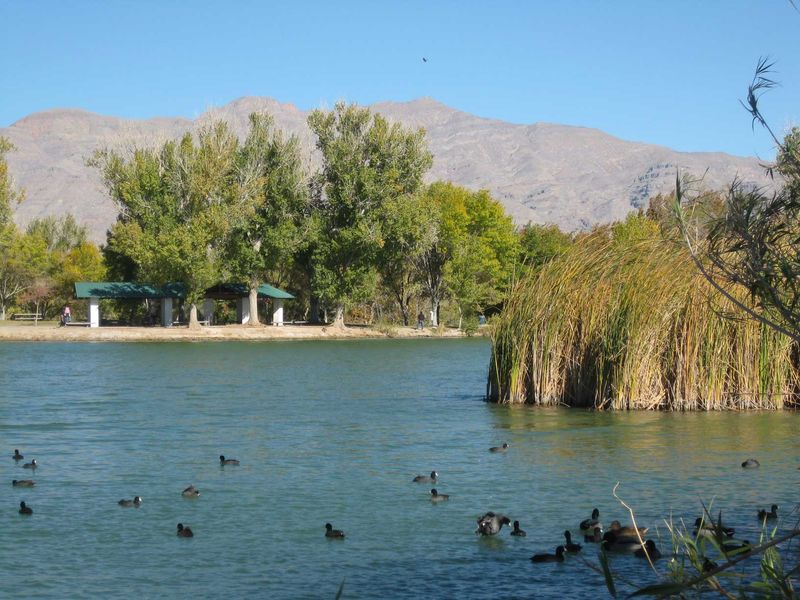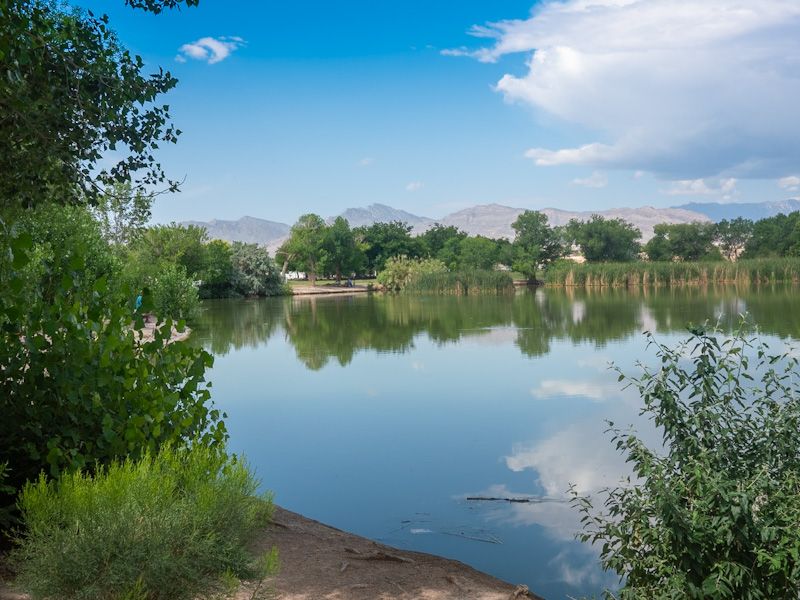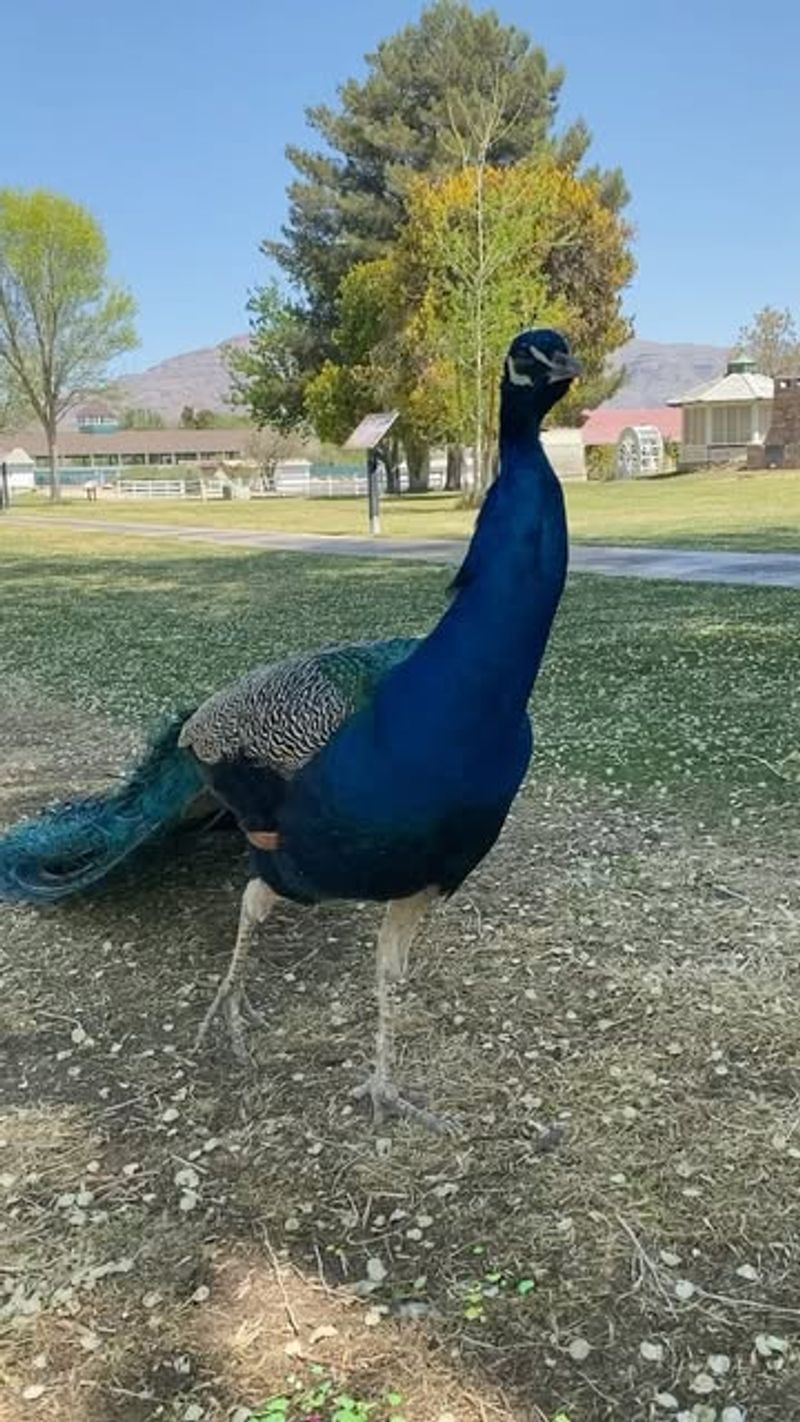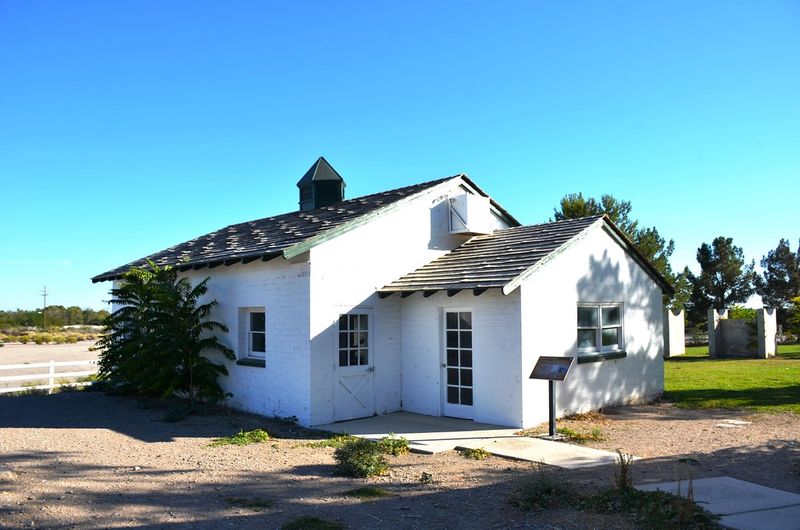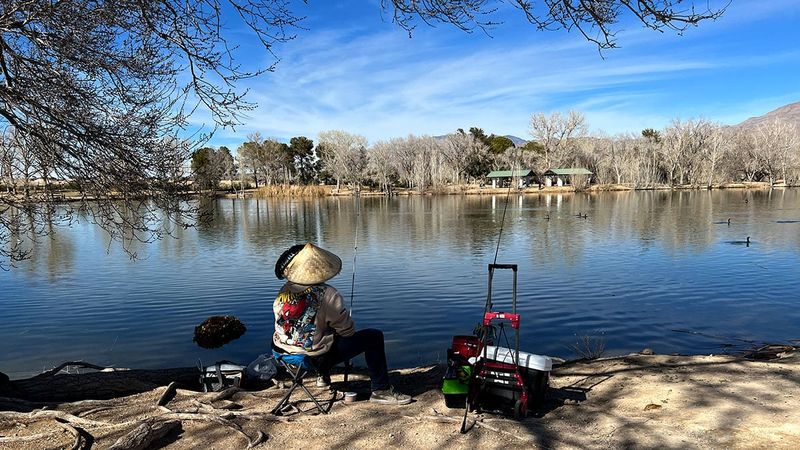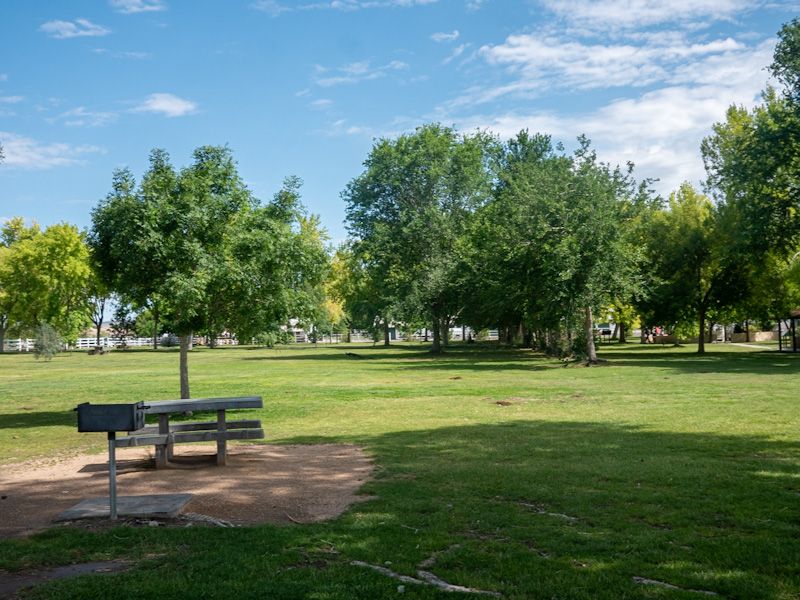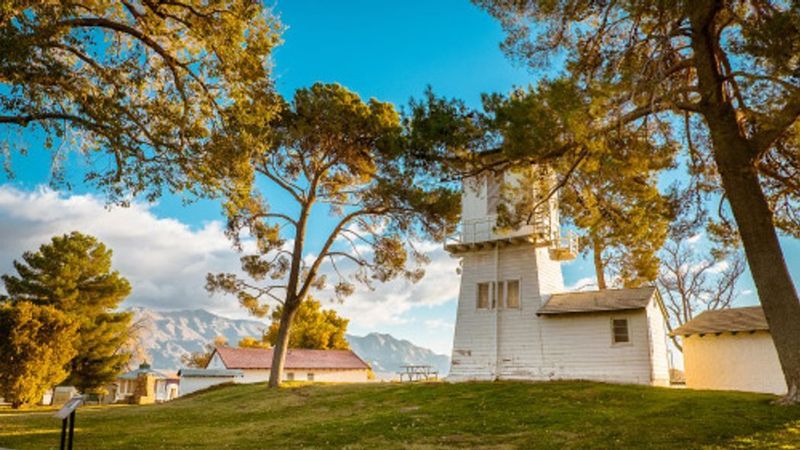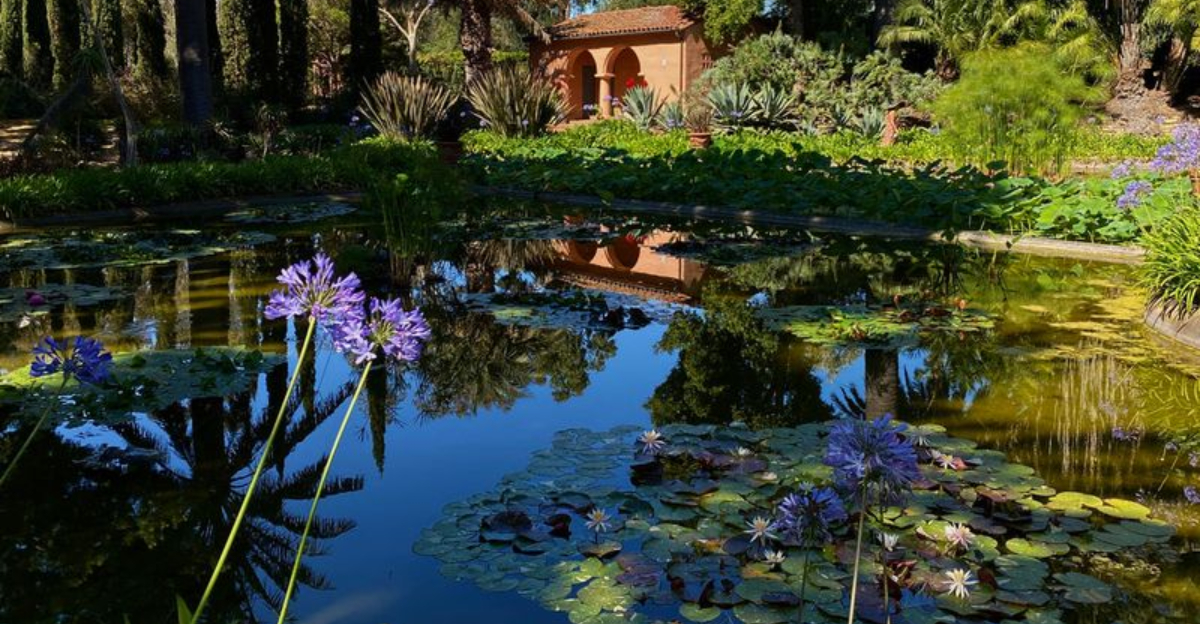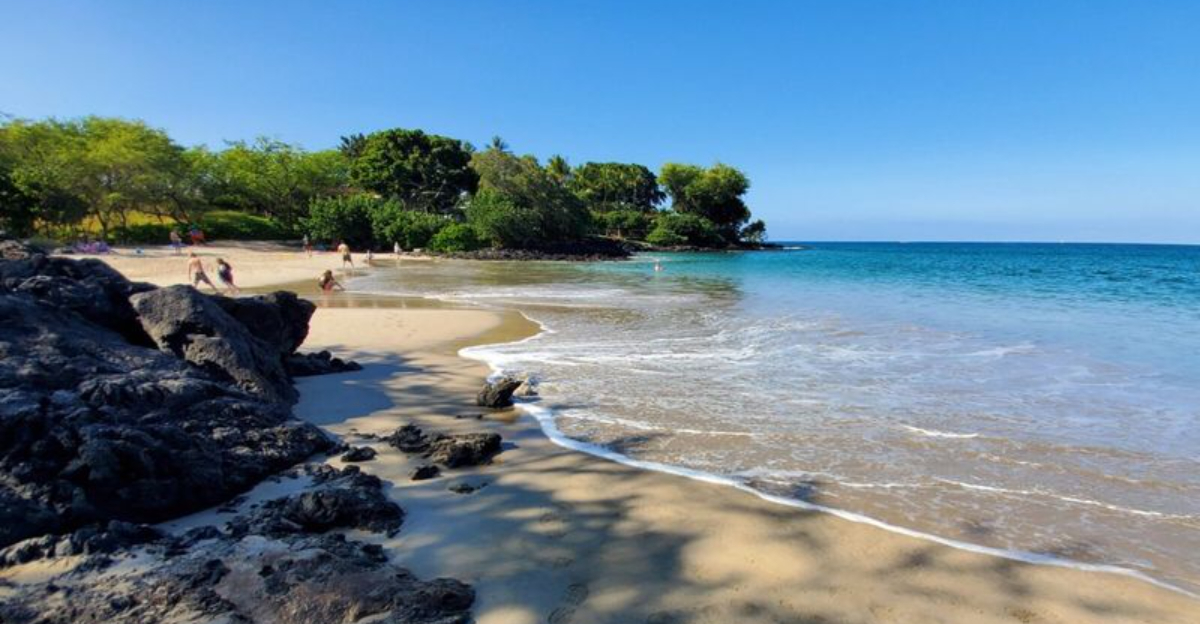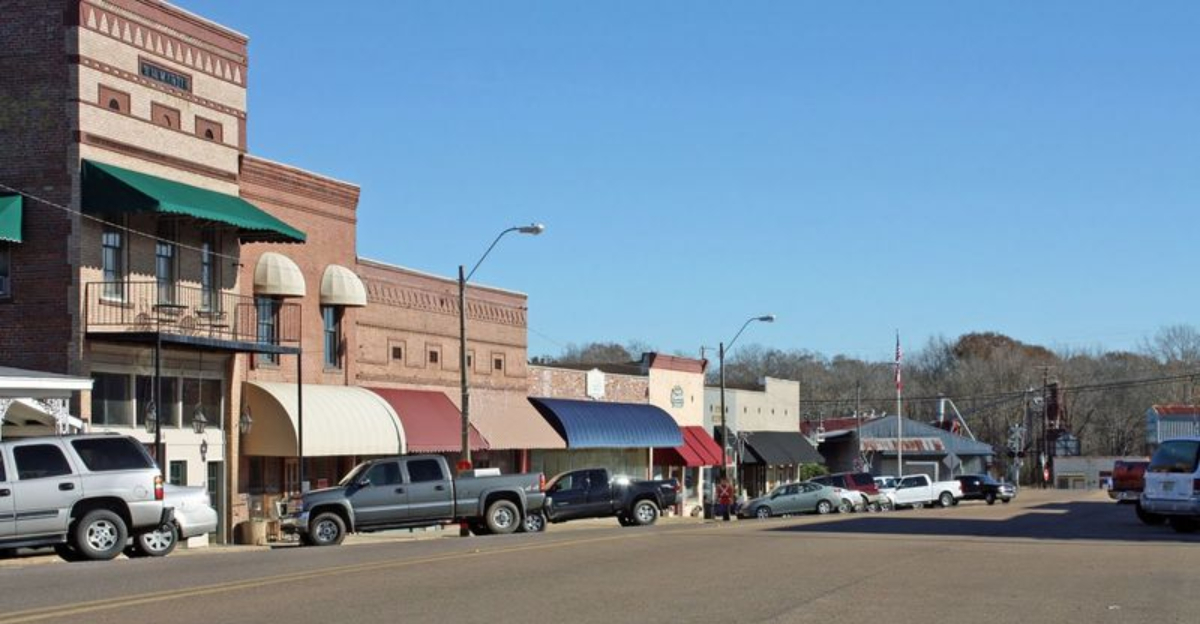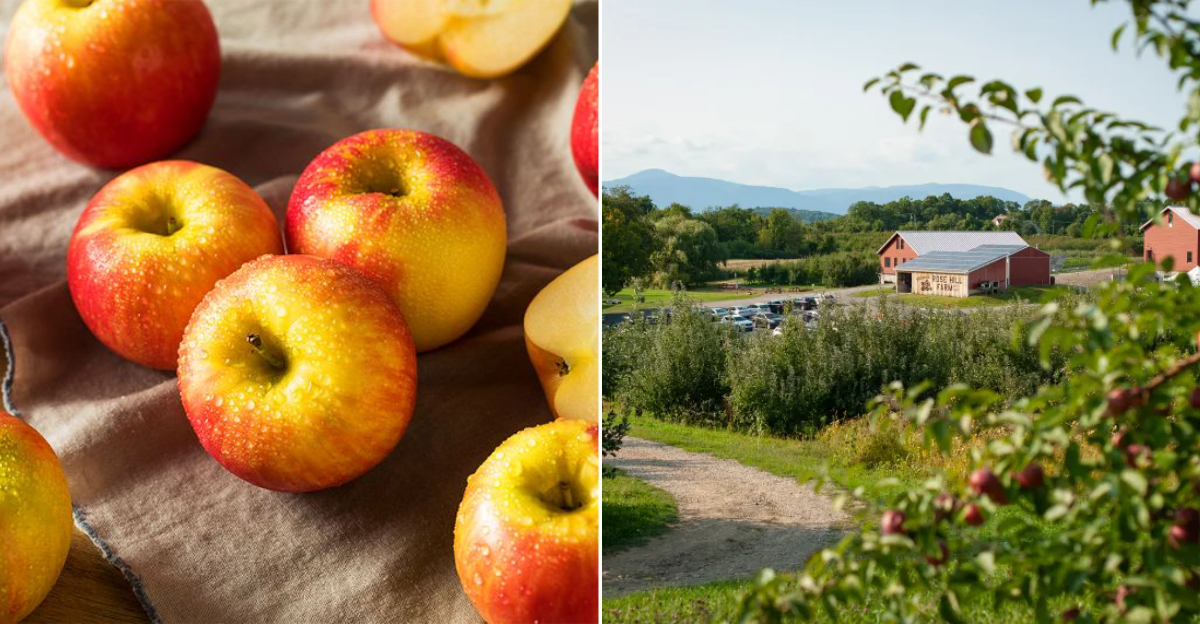Discover The Natural Beauty Of Floyd Lamb Park At Tule Springs In Nevada
This 680-acre oasis features crystal-clear lakes, lush vegetation, and fascinating remnants of Nevada’s prehistoric past.
Once a working ranch and later a divorce ranch, this historic park now serves as a peaceful retreat where visitors can connect with nature and history simultaneously.
Ancient Origins of Tule Springs
Long before the neon lights of Vegas flickered to life, Tule Springs served as a crucial watering hole for Ice Age animals.
Paleontologists have uncovered mammoth, bison, and even ancient camel fossils dating back 14,000 years!
Native Americans frequented these springs for thousands of years, leaving behind artifacts that tell stories of early desert survival. The reliable water source made this spot a desert oasis in the harshest conditions.
Transformation into Tule Springs Ranch
During the early 1900s, this verdant oasis transformed into a working cattle ranch. Pioneer families battled the harsh desert to establish agriculture where prehistoric creatures once roamed.
The ranch changed hands several times before John Herbert “Prosper” Goumond purchased it in 1941.
He envisioned something beyond cattle – a retreat where people could escape city life and reconnect with nature’s tranquility.
The Famous Divorce Ranch Era
In the 1940s, Nevada’s liberal divorce laws created a unique opportunity. Tule Springs became a “divorce ranch” where out-of-staters – mostly women – could establish residency to obtain quick divorces.
Guests stayed six weeks in rustic luxury while awaiting their freedom papers. They rode horses, swam, and dined family-style in the main lodge.
Hollywood celebrities occasionally joined these temporary residents, adding glamour to this unusual chapter in Nevada history.
Creation of a Public Park
The City of Las Vegas purchased this historic property in 1964, naming it after state senator Floyd Lamb who championed its preservation.
City planners envisioned a sanctuary where urban dwellers could experience rural tranquility without leaving town.
Workers transformed the landscape by creating four man-made lakes stocked with fish. They preserved historic buildings while adding picnic areas and trails.
The park officially opened to the public in 1977, instantly becoming a beloved retreat.
Stunning Desert Oasis Landscape
Massive cottonwood trees create welcome shade islands throughout the park, their leaves whispering secrets of bygone eras.
The contrast between lush greenery and surrounding desert creates a startling visual effect that photographers adore.
Tule Springs’ four lakes mirror the brilliant Nevada sky, their surfaces occasionally broken by jumping fish.
Wildlife Paradise in the Desert
Resident peacocks rule the grounds with regal confidence, their occasional calls echoing across the park. These colorful birds have become unofficial mascots, delighting visitors with impromptu feather displays.
Ducks, geese, and other waterfowl glide across the lakes, creating a birdwatcher’s paradise. Desert cottontails dart between bushes while ground squirrels scamper nearby.
This unexpected wildlife sanctuary exists in stark contrast to Las Vegas’s concrete jungle just miles away.
Historic Tule Springs Ranch Buildings
The ranch house stands as a silent witness to decades of western history. Its thick adobe walls have sheltered cowboys, divorce-seekers, and now park visitors curious about Nevada’s past.
Several original outbuildings remain intact, including a barn and blacksmith shop. These weathered structures provide a tangible connection to ranching life.
Walking through these historic doorways feels like stepping directly into Nevada’s pioneer days, when determination conquered the desert.
Popular Fishing Destination
Anglers cast their lines into four well-stocked lakes, where rainbow trout, bass, and catfish lurk beneath the surface.
The Nevada Department of Wildlife regularly replenishes fish populations, ensuring consistent catches throughout the year.
Families gather along the shorelines, teaching younger generations the patience of fishing. The park maintains a “no swimming” policy in the lakes, preserving water quality for the fish.
Fishing licenses are required, available through Nevada’s wildlife department.
Recreational Activities and Events
Picnic areas nestled under shade trees invite family gatherings year-round.
The spacious grounds accommodate everything from intimate lunches to large celebrations, with reservable ramadas for bigger events.
Hiking trails wind through diverse terrain, revealing different perspectives of this historic property. Photographers capture stunning sunrise shots as light plays across the lakes.
The park hosts occasional events like classic car shows and seasonal festivals, adding community spirit to this natural setting.
Future Preservation and Development
Conservation efforts focus on balancing public access with protecting the park’s natural and historical resources.
Park officials work with historians to document and preserve the site’s multilayered past for future generations.
As Las Vegas continues expanding, Floyd Lamb Park remains a protected green space – a living museum of Nevada’s natural and cultural heritage.

